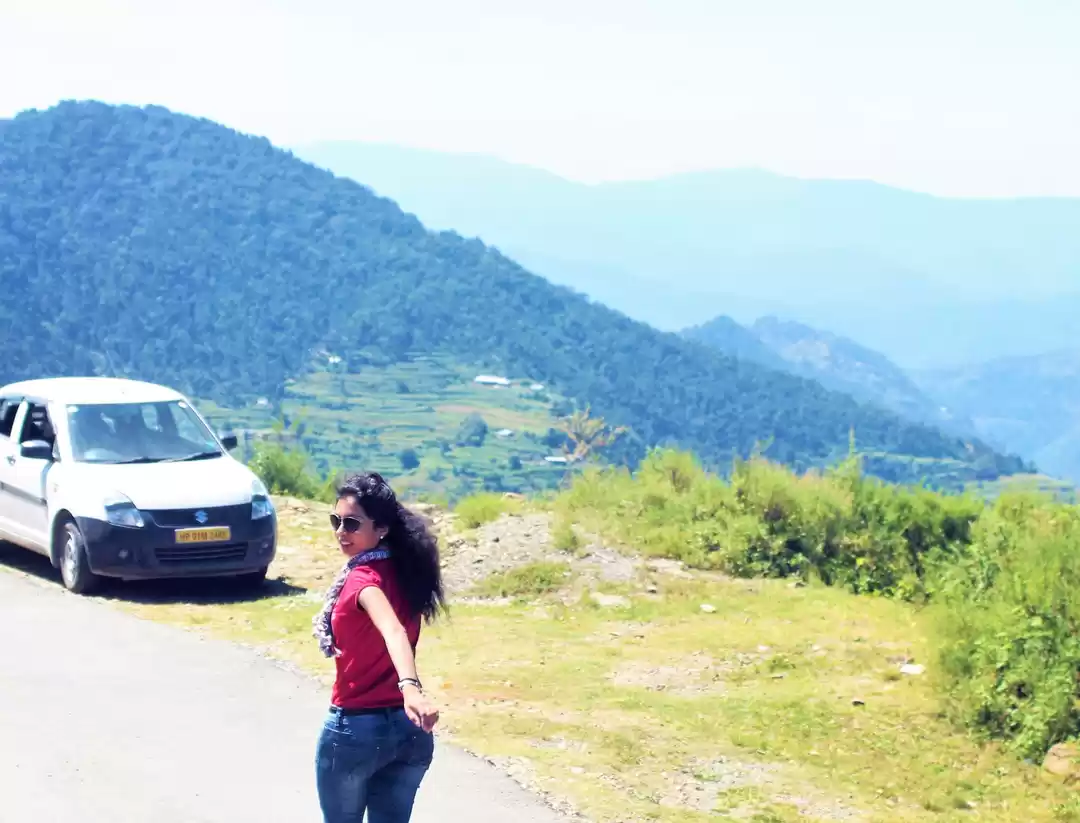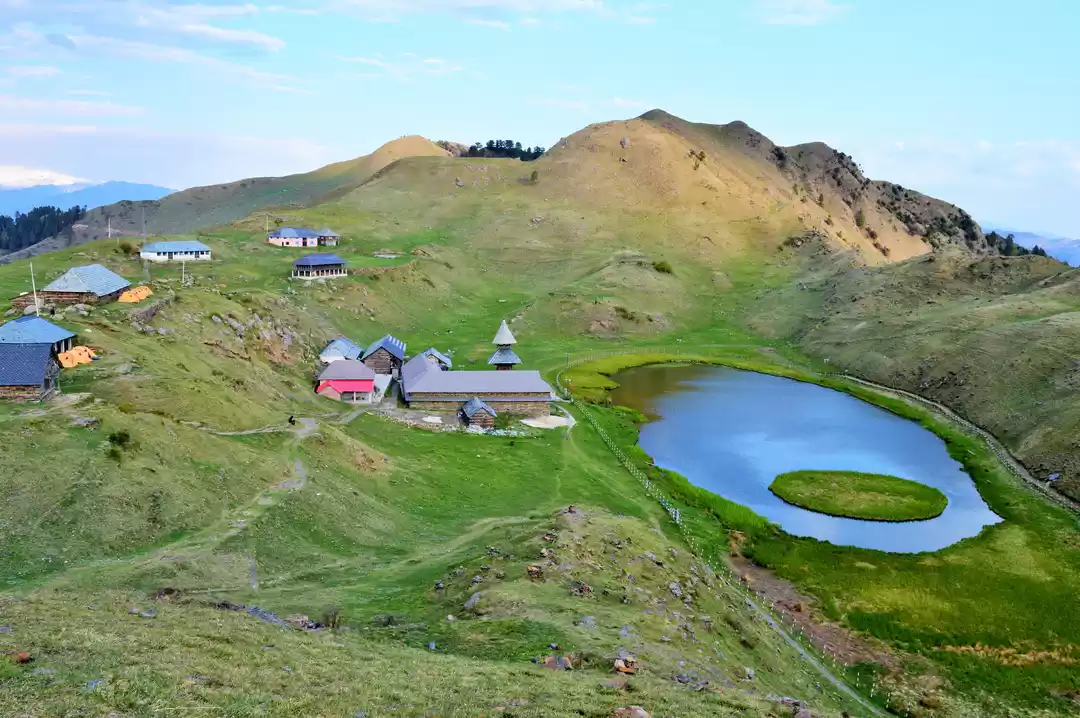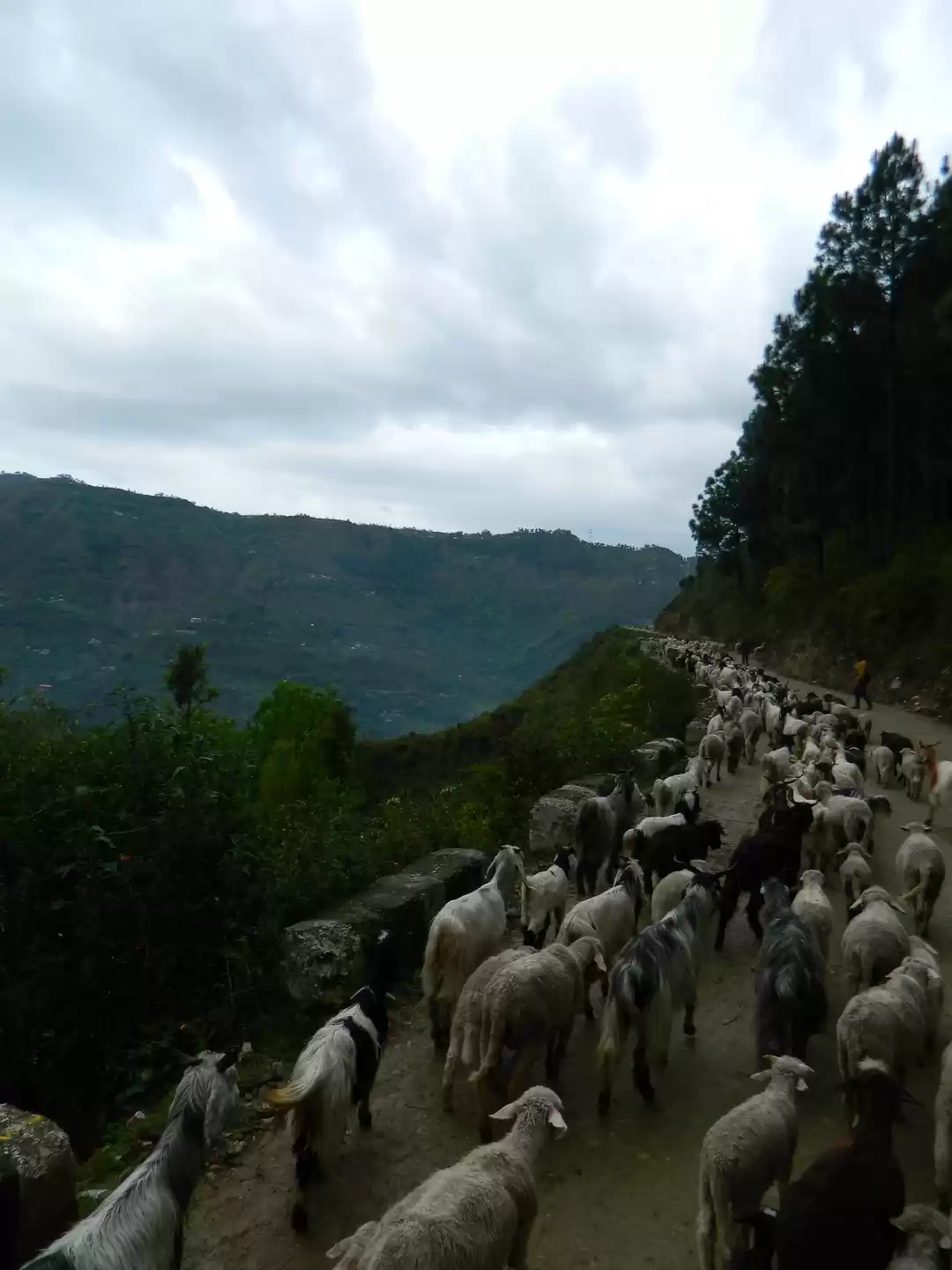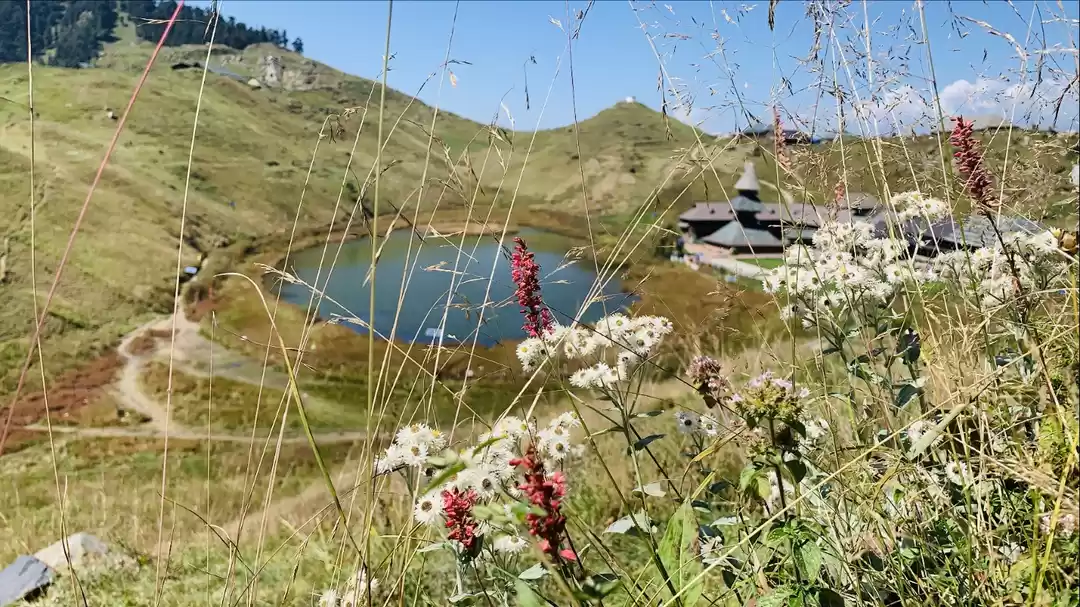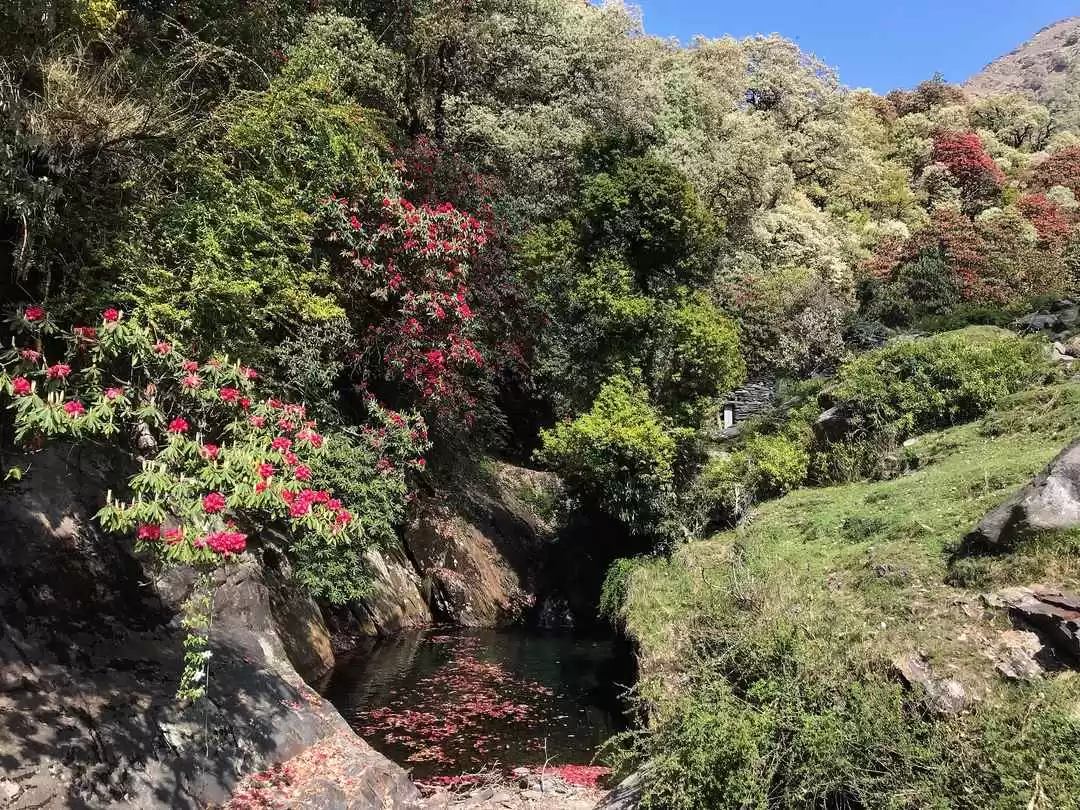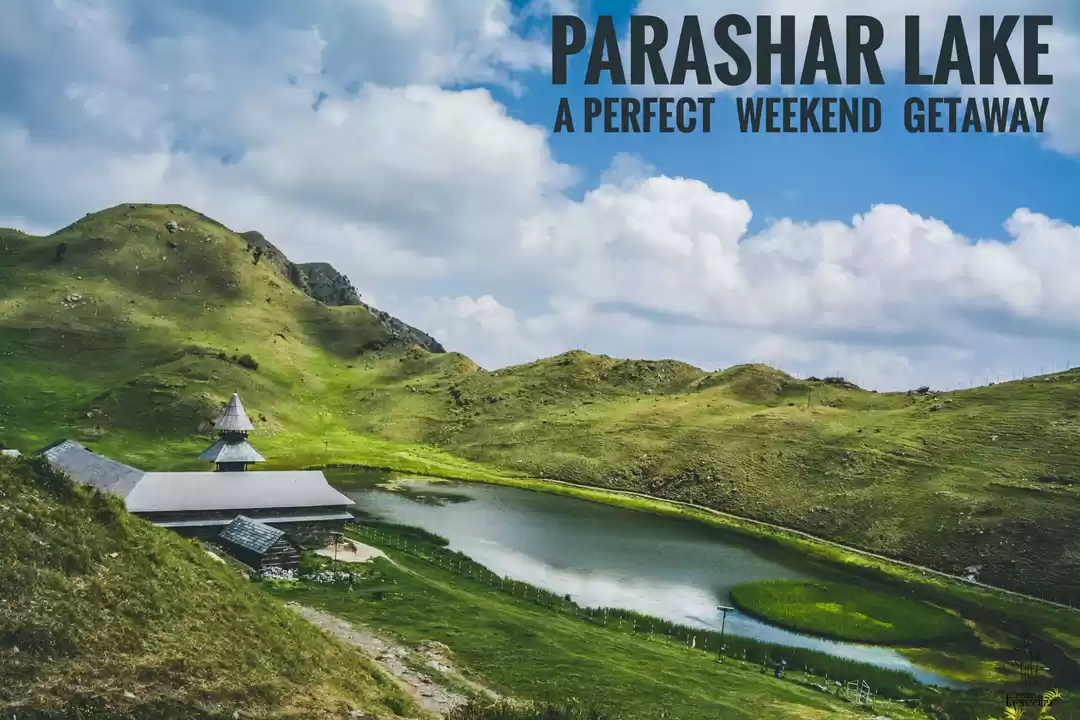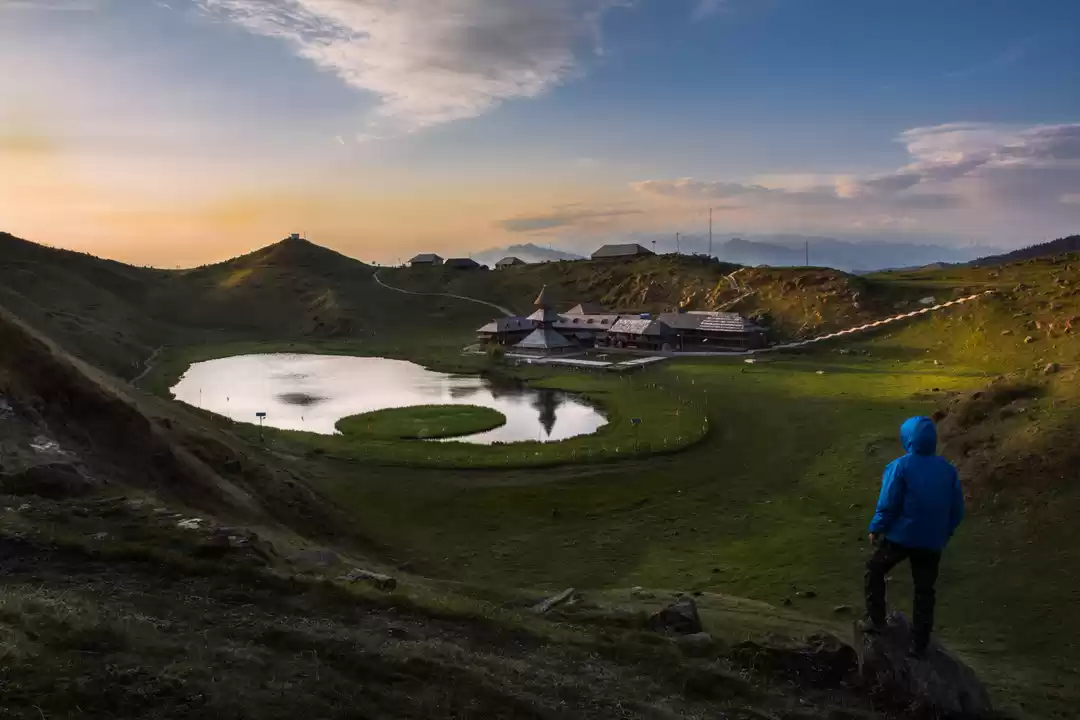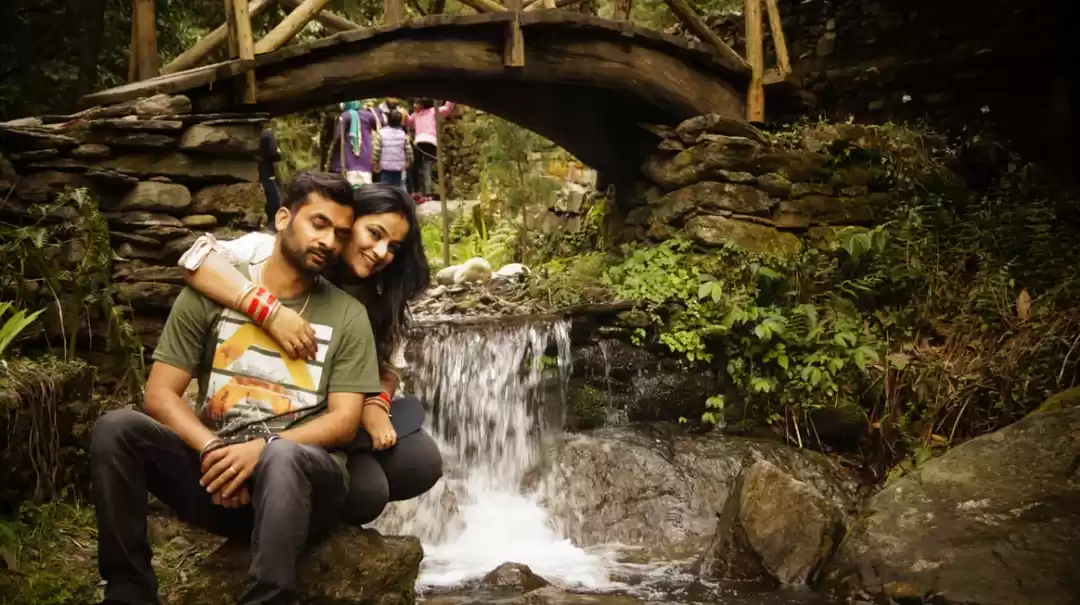In tourism, Shimla dominates southern Himachal, and Manali, the north-central part of the state. Similarly, Chamba and Kangra are the main attractions in the north-west, and Kinnaur and Lahaul-Spiti in the north-east. Mandi, one of Himachal Pradesh's oldest large towns in the central region, lying at a relatively low altitude, and now often showing the ills of crowding and congestion, is not much sought after by people from outside the state, who quickly pass through it on their way to Manali. For the people of Himachal though, it is one of their holiest places. Close by and within the Mandi district, and relatively high up in comparison to Mandi, at an altitude of 2730 m, are also the uniquely beautiful lake and temple of Parasher. So if you are in Shimla, and have a weekend to spare, think of a trip to Mandi and Parashar, and you will have seen one of Himachal's lesser-known but surprisingly beautiful and enjoyable travel-worthy regions. The Mandi district has more to offer, like Rewalsar, which will need a travel blog of its own. So you can treat this trip and the blog as an introduction, an invitation to explore central Himachal more fully.
Day 1: Shimla-Mandi-Parashar
At the Indian Institute of Advanced Study in Shimla, where I lived and worked as a Research Fellow for two years (2016-18), my colleagues and I were always keen to explore such places. So one weekend in late November, 2016, when it was not yet very cold, my intrepid trekker friend and senior colleague, Dr. Ratnakar Tripathy, and I, decided to make this journey to Mandi and Parashar.


127 km from Shimla via Ghanahatti, Darlaghat, Barmana and Sundernagar, it takes about 5 hours at a leisurely pace to reach Mandi from Shimla. One actually descends considerably from Shimla (2276 m) to reach Mandi (800 m), which is located on the banks of river Beas. We had hired a dedicated cab for the entire trip from our reliable taxi rental in Shimla. Lal Singh ji, our driver, was adept at hill driving, something we were thankful for given how precarious hill roads can be. Deciding to halt at Mandi on our way back, we headed further, about 50 km and 3-4 hours onward, to Parashar. As you drive past the campus of IIT on the outskirts of Mandi town, the climb up to Parashar (2730 m) starts in earnest. The ascent is one of the steepest I have done in Himachal. As you go up and up the winding, serpentine road in these ghats, the drive becomes both tricky and thrilling. In some patches the road is very narrow and gravelly, requiring careful and stable motor control. The dense Himalayan vegetation of the Beas valley begins to give way to a sparser, grassy cover even as the air becomes rarefied.



On the top, where the Parashar lake and temple are located, the landscape flattens out into acre after acre of gently rolling meadows, carpeted with thick, grayish-green grass. This is classic pasturage, where hill shepherds graze their sheep and goat, and cattle and ponies. We arrived in the evening, just as the sun was setting, and the scenes were spectacular, breathtaking and just too pretty to be true.



The Parashar plateau is largely uninhabited, except for a small community of semi-permanent residents at the lake and temple complex. However, the HP PWD and Forest Department both have their rest houses on the plateau. rooms in these can be booked from their respective offices in Shimla for a paltry amount. The former lodging is larger and newer, and is situated a couple of meadows below the latter. Not knowing this difference, we had booked the Forest Rest House: in hindsight, you should try the PWD Rest House. With two simple, spacious rooms, but oddly, colorful lights in the bathrooms, the Forest Rest House stands solitary and tall on the highest ledge of the plateau. In its perch, it is more exposed to the elements, as we discovered later. We had to carry our vegetables and any other special dietary requirements we had (like bread, butter, eggs) with us from Mandi, as the rest House's kitchen was provisioned only with dry ration and cooking oil. We discussed our dinner with the caretaker after we had made ourselves comfortable in our rooms, but the evening was too beautiful to stay indoors, and despite a slight nip in the air, quite pleasant for a stroll outside.



Oddly again, there was a tent pitched right outside the Rest House. It seems that camping facilities are provided by the Forest Department in summer. But this tent was a dummy because despite the somewhat moderate temperature on the plateau at that moment, we realized that it is perhaps too cold in the night in this season for camping outside. However, framed against the magical dusk of the valley, that tent at least made for good advertisement for camping at Parashar!

Our food was cooked for us in a traditional, old-style Himachali kitchen with a metal hearth and a long, indoor chimney. A young man from Delhi, a corporate executive, traveling solo in wanderlust, had arrived unexpectedly at the Rest House and needed a room for the night. Since we had booked both the rooms, the caretaker left it to us to decide if we could give him shelter. We decided to accommodate the guest traveler in the lounge, and he turned out to be fun and great company. Regular public transport to the lake can be minimal and unpredictable, our new friend told us, so he had had a somewhat tough journey up. But once on top, like us, he believed that it had all been worthwhile! As we sat in the lounge after dinner, chatting late into the night, it grew pitch dark outside. The temperature, about 10-15 degrees C in the evening, dropped suddenly to about 5 or less. We were to experience the full implications of this sudden turn in weather the next day.
Day 2: Parashar
The day started bright and sunny, with little trace of the cold weather from the night before, auguring well for a day-long trek on the Parashar Plateau. After breakfast, the three of us started off for the lake and temple, about a quarter of a kilometre away. The path went up and down and around interlocking meadows where ponies grazed unmindful on the thick grass.


The lake and temple of Parashar are located in a bowl-like depression on the plateau, giving them a pearl-like, ethereal quality that is indeed unique even for Himachal. There are several legends about the lake. In one account, the great sage Parashar (pronounced 'Prashar' in the Punjabi lilt of the region), of the Vedic-Puranic scriptural tradition, chanced upon this remarkable water body during his meditative wanderings, and impressed by its tranquility, decided to settle down near it. The temple is devoted to him. Another story attributes the creation of the elliptical-shaped lake to the hefty Pandav hero Bhim from the epic Mahabharat who, again during his wanderings in this area, is supposed to have pushed his arm and elbow into a mountainside and excavated the lake.




The lake is not very large and has an island of matted vegetal and soil matter floating on its surface, a spectacle of wonderment for visitors. Many believe that the depth of the lake cannot be plumbed. In any case, it makes a pretty setting for an equally unique temple. Built by the rulers of the medieval kingdom of Mandi in approximately the 14th century, and dedicated to sage Parashar, the main temple is a three-storeyed pagoda-like wood and stone structure. The first/lowest square storey has an enclosed fore-hall (mandapa) and sanctum (garbhgriha), and the second/middle one provides a base to hoist the third/upper part, a conical capping tower (shikhara). The main structure is cradled by an L-shaped double-storeyed wood and stone building that creates a courtyard for pilgrims to use, and contains rooms that provide living quarters and storage for the keepers of the temple and pilgrims who want lodging. When the ground becomes snow-covered in winter, the temple complex becomes an isolated but secure refuge for its keepers.






Having packed our lunch from the Rest House, we started out for a trek on the plateau after spending some time admiring the temple and lake. There are many paths that lead out from the bowl-like receptacle of the lake. These paths have been created by the Gaddi shepherds of the Himalayan region, who sustain a nomadic animal-rearing life and economy in these mountains and hills, seasonally moving up (summer) and down (winter) in search of adequate pastures for their flocks. Historically they have also been traders who, along with the produce of their flocks, have transported commodities between the many Himalayan sub-regions they connect through their movements.

This landscape is dotted with mud and stone huts with thatched roofs where they shelter during their long journeys and inclement weather. Inside these bare structures, there are hearths and separate areas for the animals. Over time, as change has swept across even these desolate areas, the Gaddis, and their life rhythms and economies, have suffered enormously.




One can keep trekking for hours in these hills but we were forced to hurry back a little before dusk because the sky suddenly became cloudy, the air cold and sharp: it looked like a winter storm was brewing.


In fact we returned to the Rest House just in time to escape the strong gusts of wind that had begun to blow over the plateau. These gusts grew more powerful and menacing as the evening turned into night until, and by the time we were retiring to sleep, the wind was howling all around us, making the window panes of our rooms tremble and shake noisily. By the time we woke up next morning, the local forecast was that a snow storm was rapidly approaching, and if it was going to be as heavy as it looked by these warnings we had experienced, there could be an extended snowfall. There was a danger that we could get stuck at the Rest House for days. Without losing any time, we started back for Mandi.
Day 3: Mandi
Mandi is one of Himachal's oldest and largest towns located at the confluence of river Beas and the stream Suketi Khad. For long the capital of the kingdom of Mandi, it has an old town hugging one bank of the river. This old town has a dense concentration of temples of different antiquity built by the rulers of Mandi over several generations and centuries. It is also plotted with narrow streets going down towards the river, on both sides of which are small, traditional shops selling Mandyali (of Mandi) sweets and savories, among other things. Though you will be tempted to try these out immediately, pack these up for snacking on your journey back to Shimla, for lunch you must reserve for the delectable Mandyali dham, roughly translated as the Mandi thali, derived from the traditional, multi-course festival and ritual food of Himachal (there being Chambyali, Kangri and other dhams for other regions). The Sharma Dhaba near the bus stand serves a full spread of the Mandyali dham. For a full description of dham cuisine, please check the following website: https://travelshoebum.com/2018/01/29/dham-across-himachal-pradesh-where-to-eat-it/ Remember also to ask for sidu, the bao or tingmo-like Himachali wheat bread balls filled with sweets or savories. (http://hpmandi.com/food/recipes/105-sidhu-sidu).
The scores of small, colorful temples that emerge from behind old houses standing cheek by jowl along the river ghat, and the even older banyan and peepal trees lining the bank, are delightful to explore. Each of them has a story behind their endowment, building and significance. This density of temples has earned Mandi the title of 'Kashi of Himachal', Kashi being another name for the ancient temple city of Benaras.

Among these many temples, perhaps the grandest is the Panchavaktra temple at the confluence, dedicated to Shiva and built in the early 16th century. When the rivers are flooded, the temple becomes an island of sorts.





After a thoroughly satisfying tour of Old Mandi, we started for Shimla post-lunch.
I hope you have been tempted enough by this travelogue to do a trip to Mandi-Parashar. I am sure you will not be disappointed. However, October or early November might be a better time to travel, when you can do this trip in a more leisurely way and not be forced to rush back as we were! I hope I can go back to Mandi and central Himachal for more!















